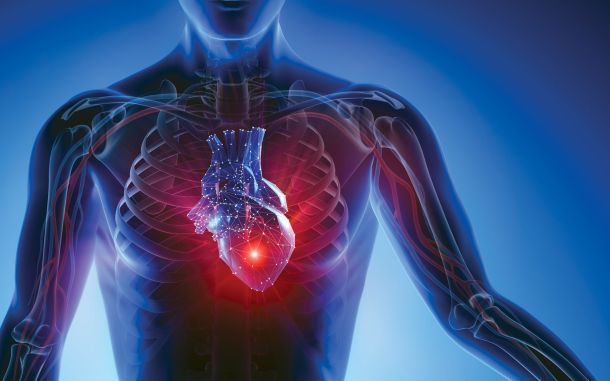Hearts and Minds: Hizmet Schools and Interethnic Relations

In This Article
-
All Hizmet schools are modern, secular and of high-quality in education and facilities. They have no hidden political agenda, and in all countries they operate, they have three primary objectives: Quality education, strong character education and augmented cross-cultural cohesion.
-
Hizmet Movement has transformed from being a community of the Turkish diaspora to a multicultural organization with a worldwide multicultural structure.
Authored by Dr. Vincent N. Parrillo and Dr. Maboud Ansari, two American scholars specializing in sociology, Hearts and Minds: Hizmet Schools and Interethnic Relations, are on the bookshelves for readers’ perusal. Having heard of the ideals of Fethullah Gülen and the projects carried out by the Hizmet Movement at a dialogue reception in New Jersey, the authors were impressed by the educational, dialogue and humanitarian activities. They expressed a desire to observe and examine this civil society movement, which they had no prior knowledge of, from the perspective of its impact and contributions in the United States and worldwide.
Parrillo explains the rationale behind the selection of countries visited for their research spanning from 2012 to 2015, citing the social and ethnic structure, as well as religion, as key factors. For Muslim-majority Europe, Bosnia and Herzegovina and Albania were chosen, along with Kazakhstan from Asia. Romania and Poland, representing Christian-majority Europe, were included, and for the Americas, the United States and Canada were selected due to their large secular cultures and diverse societal structures.
In the introduction, the authors are briefly explaining Hizmet Movement and Gülen’s philosophy of education. They also compare their research with previous ones, the impact of sociological theories on this research, and the framework and methodology.
Highlighting in the introduction that no centralized structure in terms of administrative relations exist among Hizmet schools worldwide, the authors also state their consideration of the criticism that these schools might have hidden agendas other than education and that they focused on this during their research. They underline that while religious values and dynamics played an important role in the founding of these schools, the lack of religious education is a common key characteristic.
Highlighting the challenges inherent in conducting an academic study across seven culturally and sociologically different countries, the authors anchor their research in Strauss’s “negotiated order theory.” According to this theory, meanings are created and shaped through social interactions, and desired goals can be achieved through organizations with their own structure and functioning. Given that Hizmet schools aim to provide modern, scientific, and technological education while instilling empathy and respect as universal values, the authors argue that Hizmet schools should not be viewed merely as educational structures. Instead, they posit that these institutions have a broader objective of implementing transcendent practices aligned with the structures and operations of conventional schools. The authors contend that a comparative academic analysis of Hizmet schools in various countries can be effectively conducted through the lens of the negotiated order theory.
The book covers each country exclusively under the main theme. Following the general sociological context of each country, profiles of Hizmet schools and interviews with administrators, teachers, students, parents and trustees and/or sponsors are presented with country-specific evaluations. The book concludes with a section on the Golden Generation concept and a comparison of the schools.
Looking at the research from the perspective of Muslim countries, the authors briefly state that “For research on multiculturalism, it might be best to start with Bosnia” “and continue with Albania”, another Muslim country in the Balkans. The authors note that, unlike other countries, in Albania, the Hizmet Movement operates religious schools under the country’s education system in tandem with secular school systems. While examining Kazakhstan, a Muslim country in Central Asia, the authors emphasize the high demand for the Hizmet schools and how students are entitled for enrolment through centralized exams.
Continuing their research with Romania in the category of Christian countries, the authors mention Romania’s openness to multiculturalism and its homogeneous structure as compared to Poland, which has a protective social structure. In these
countries with diverse societal and Christian understandings, the authors were also interested in how Hizmet schools are structured and received by the people.
Among the multinational and multicultural countries, the authors chose Canada and the United States, noting that the schools operating in these countries have distinctive demographics compared to those in other countries, offering education to the children of immigrant families, and providing cultural education alongside their prevailing educational philosophy.
In the Golden Generation section of the book, the authors included interviews with and observations of students from Beder University in Albania, who were educated in Hizmet schools. The authors state that a deeper sociological understanding of the Hizmet community could be possible by perceiving Gülen’s Golden Generation concept, which bears a sociological significance. The authors suggest that this concept could be analyzed vis-à-vis Ibn Khaldun’s concept of solidarity, Karl Mannheim’s generation theory, and Ferdinand Tönnies’ congregation and community concepts.
When asked to describe Hizmet schools in three words, a young man studying at Beder University said, “Academic success, service, and tolerance,” while a Hizmet-inspired teacher remarked, “I think our ideal of raising the Golden Generation encourages us to provide quality education and makes a great contribution to the future of society.” While the university students interviewed seem to embrace Gülen’s works and ideas, it is also emphasized that these young people disagree with the claims that the Gülen Movement is a cult. When asked how they associate themselves with the Movement, they define themselves as “sympathizers.” In light of the students’ responses on how Hizmet schools contribute to society, the authors state that the Movement “reinforces knowledge, universal values and discipline, and helps to advance democracy.”
The final section of the book compares the schools with one another and concludes that in all countries visited, Hizmet schools place great emphasis on math, science and technology education, and teach humanitarian and universal values that enable diverse students to accept everyone with tolerance and love. Stating that the phrases “a better human,” “heart and mind,” and “perfect human,” heard most frequently in the interviews indicate the schools’ efforts to bring forth well-equipped individuals beyond the mere transfer of knowledge and skills. The authors emphasize the differences in some practices due to the cultural norms of the countries they visited and conclude that “The fact that cultural reinforcements are made for students in some countries makes these schools different from others.”
The ideas put forth in the conclusion section may be summarized as follows:
1- Hizmet schools have no hidden political agenda.
2- All Hizmet schools are modern, secular and of high-quality in education and facilities.
3- Teachers, students and parents take great pride in the schools’ multicultural student demographics.
4- In all countries, Hizmet schools have three primary objectives: Quality education, strong character education and augmented cross-cultural cohesion.
5- Albeit the Hizmet Movement faces a myriad of challenges and injustices, it already has a positive impact on the global order.
6- Hizmet schools offer equal educational opportunities for boys and girls.
7- Hizmet Movement has transformed from being a community of the Turkish diaspora to a multicultural organization with a worldwide multicultural structure.
8- Hizmet Movement has remained unchanged and untransformed notwithstanding all injustices experienced.
9- Hizmet Movement is on the threshold of a new transformation.
10- Although nothing can be claimed about the future of the Movement in face of the hardships experienced, given its contributions to universal and humanitarian values education, social services and interfaith dialogue, it is certain these activities will resonate for generations.









